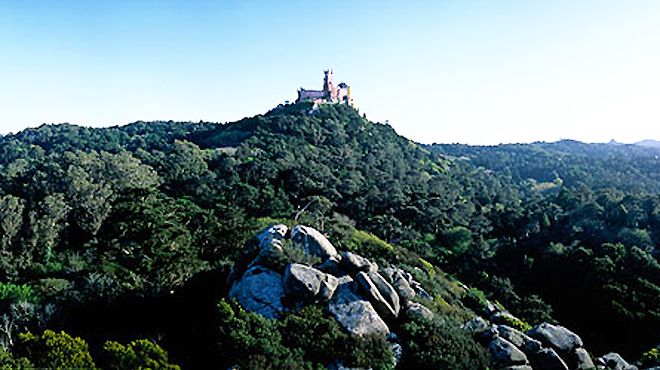Parque Natural de Sintra-Cascais

Protected Areas
The westernmost point of the European continent, was considered in antiquity to be the place where "the land ends and the sea begins" - the Cabo da Roca is one of the most spectacular locations in the Sintra-Cascais Natural Park. Its vertical cliffs rise up around 100 m above sea level, offering spectacular landscapes. When you visit the site, ask for the diploma that proves you've been there.
If you're interested in geology, make sure to visit notable formations such as the consolidated fossil dunes in Magoito and Oitavos, the fields of calcareous stone eroded by the seawater next to Cabo Raso (Cascais) and the “living” cliff in Azenhas do Mar, on which a picturesque village has been constructed by great human skill. The dinosaurs also left their mark in the zone, in the almost vertical chalk layer of the South Cliff of Praia Grande where an important collection of 11 trails and isolated footprints can be seen.
Praia Grande is one of the many beaches found on the coastal rim of the Park, that also includes Adraga, Samarra, Praia das Maçãs or Guincho, integrated within a highly characteristic system of sand dunes. Visitors will encounter excellent conditions for practising windsurfing, surfing and bodyboarding or simply for relaxing by the sea.
Inland, in the northern zone of the mountain range, a rural zone still has picturesque villages, where the landscape is marked by dry stone walls, that demarcate the different agricultural fields and protect them from maritime winds – home to Colares wine.
The landscape is dominated by the Serra de Sintra that is covered in rich vegetation, and gives rise to a microclimate that makes this Park such a special place. The fresh and varied aromas that can be found here make a walk through the mountains an unforgettable experience. Set off on a personal adventure, but don’t venture to far afield or go on a walk proposed by the Park, visiting places such as the Convent of the Capuchos, a modest 16th century convent, or the Hermitage of Peninha, erected on a high point near the coast, offering a spectacular panorama.
Sintra, was adopted as a summer place of residence by Kings, nobleman and wealthy members of the bourgeoisie, and still conserves a notable architectural heritage. Due to its harmonious blend with nature, UNESCO classified Sintra as a world Heritage site in the category of cultural landscapes.




 Explore
Explore 
 Remember and Share
Remember and Share 


